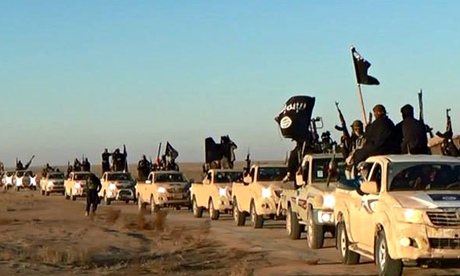A terror group that claims to be a state, or a “caliphate,” needs a lot of money, especially when — according to most estimates — some 4 to 5 million people live under its control.
ISIS did have a lot of money. Even before it went on its land-grab in 2014 it probably had assets worth $875 million, according to a study by the Rand Corporation. Much of that came through extortion.
It also enjoyed windfall profits in the expansionary days of 2014. These included, according to U.S. estimates, between $500 million and $1 billion seized from Iraqi bank vaults. The branch of the Central Bank in Mosul alone was said to contain more than $400 million.
It also grabbed thousands of tons of military equipment left behind by fleeing Iraqi security forces, and oil wells and refineries.
The cash was rolling in. Speaking in October 2014, senior U.S. Treasury official David S. Cohen said ISIS “has amassed wealth at an unprecedented pace.”
Last year, the group captured valuable phosphate deposits near Palmyra in Syria, to add to those parts of Anbar province in Iraq which are rich in the material. Phosphates are an important ingredient in fertilizer.
ISIS fighters were forced to abandon al Hawl in November. They scrawled graffiti on the tanks and rigged booby-traps. They also left behind a bomb factory and a source of taxation: al Hawl had 3,000 inhabitants.
Its retreat from al Hawl is one small example of a growing problem for the “caliphate.” Its revenues are declining as its control over populations and resources shrink.
In 2015, ISIS lost about 40% of the area it held in Iraq, as well as parts of northeastern Syria that have both good farmland and oil. Airstrikes on the oil infrastructure it controlled have further diminished the balance sheet. Some of its senior financial officials have been killed. Trading through Turkey has become much more difficult. Its cash depots have been bombed.
ISIS isn’t about to file for bankruptcy, but its balance sheet is hurting.

